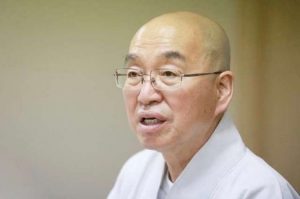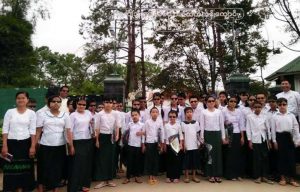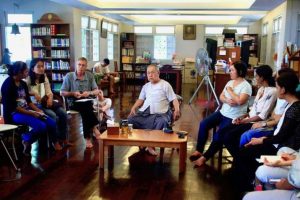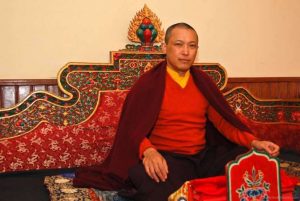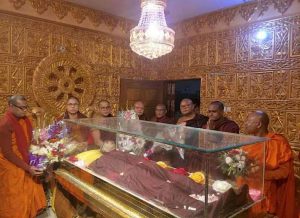
Her story reads like a fairytale. Via her mother’s ancestry, she has royal blood flowing from the line of Songsten Gampo’s minister Lonpo Ghar. Her great-grandfather, Togden Shakya Shri (1853 – 1919), was effectively a “self-made” guru, his mastery so legendary that he rose from a simple nomadic background to become one of Tibet’s most celebrated figures of Dzogchen and Mahamudra. Her father further consolidated the Drukpa lineage across the Himalayas, and it is now Khandro Rinpoche who is carrying this sacred flame into the 21st century. In relating her tale to me, she never loses her intimate touch – that personal flair that her students cherish and are nurtured by.
Her approach is “new” in the sense that many are surprised to meet a teacher who is so grounded in the everyday – in the family and the hearth. More than most preceptors I have met, Khandro Rinpoche is a master most attentive to family matters and women’s concerns. She has plenty to say about what I call the “frenetic directionlessness” of Hong Kong (which simply means being remarkably busy and stressed without pausing to reflect on the reasons why we are stressed). Returning to the simple pleasures of family warmth and participating in intimacy is one of her favorite themes. This also struck me as one of her particular pedagogical strengths – particularly given her status as a laywoman and her personal immersion in family life with her late husband, His Holiness the 9th Shabdrung Ngawang Jigme of Bhutan. But in reality, she utilizes a very established approach: to master the techniques of meditation while at the same time taking care of students’ everyday queries. This is traditional Buddhism at its finest: intellectual and reasonable, but channeled with compassion, warmth, and tenderness.
But even this attunement with the everyday needs of students does not explain her success. In some ways, it is a simple matter of commitment. Khandro Rinpoche’s expansive, contemporary outlook was helped by her studies at the California Institute of Integral Studies (she earned a Masters in East-West Psychology there). But one of the difficulties for modernizers of the Buddhist tradition (be they of the Theravada, Mahayana or Vajrayana) is that the dilution of traditional visions of Buddhist belief comes almost naturally. If you are skeptical about formal religious claims, you are much less likely to devote your life to them, be it as an ordained cleric or a lay teacher like Khandro Rinpoche. There is no existential angst for her in this respect. The Drukpa house is an institution and she bears a degree of responsibility for its stewardship. She speaks softly and tenderly, but also in a very-matter-of-fact way. She can be businesslike if she wants, because unlike those who are afflicted with uncertainty about scriptural truth, she has a job to do.
This is how Khandro Rinpoche’s spiritual vision has tailored the sometimes-troubled relationship between the past and present. Firmly based in her lineage’s tradition, she owes nothing to “modernity” and its darker shadows. She simply teaches that, through meditation, you can reach the same state of traceless enlightenment that the Buddha did more than two and a half thousand years ago. Yet it is true that many traditional temples and masters mistake conventional customs or habits as the spirit of transmission. This is a common problem of Buddhist communities that Khandro Rinpoche is determined to avoid. Unadorned and unembellished, the ‘princess’ (for that was her childhood moniker- “Seymo”) has a disarming, classless openness to all. She understands how her tradition’s values and blessings should be adapted for a postmodern age. And that is the true miracle.



